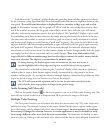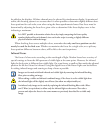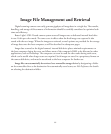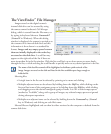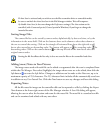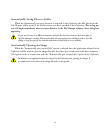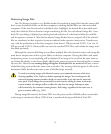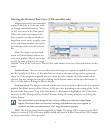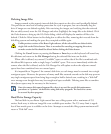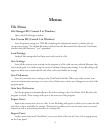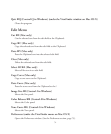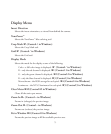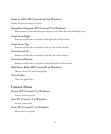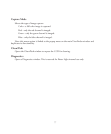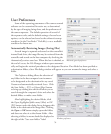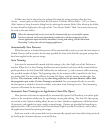
72
Deleting Image Files
Images scanned to the camera’s internal disk drive remain on the drive until specifically deleted.
is provides an extra level of backup protection for a job in progress, but can eventually clog the
drive if images are not deleted regularly. After retrieving the images, and verifying that the retrieved
files are safely stored, enter the File Manager and select (highlight) the image files to be deleted. Click
the Delete button to bring up the File Delete dialog, which will display the number of files to be
deleted. Click the Delete button in this dialog box to delete the files, removing their records from the
disk filing system and making the space they occupied available again.
Unlike previous versions of the Better Light software, all the selected files are deleted with a
single click on the Delete button. ere is no method for canceling or stopping this action,
so make certain the files should be deleted before clicking the Delete button.
Clicking the Cancel button or pressing the Return or Enter keys on the keyboard will cancel any
file deletions and return to the File Manager leaving the selected files intact on the disk.
When a file is deleted, any unused (“available”) space on either side of the file is combined with
the deleted file’s space to make a single, larger “available” space. is occurs immediately within the
camera when the file is deleted, and the File Manager list will update to show the adjacent unused
spaces have been combined into one unused space.
It is impossible to “fragment” the camera’s disk drive, as each image must be scanned into a single
contiguous space. However, the presence of many small files scattered around on the disk may prevent
any single contiguous space from being large enough to hold a desired scan, resulting in a “disk full”
error message even though there may be enough total space available. Deleting some files to combine
the adjacent spaces may be necessary in this instance.
Since the camera disk cannot fragment files, there is no need for special disk maintenance
procedures to “optimize” the hard drive using disk utility programs. e hard drive cannot
be accessed by these programs.
Hard Drive Storage Capacity
e hard disk in your Better Light control box uses a filing system with a maximum of 255
entries. Each entry is either an image file or an available space marker. e 255 entry limit is regard
-
less of how much space is available on the drive. Attempts to exceed this filing system maximum will
return a “Disk full” error.



